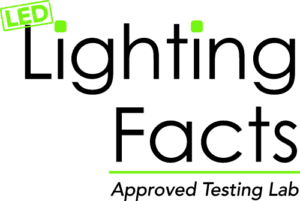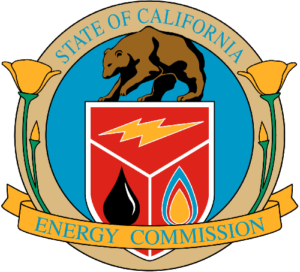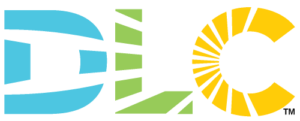There’s no question that LED lamps and luminaires have surpassed the energy efficiency capabilities of incandescent and fluorescent sources. It’s also true that in many applications, LED sources can deliver superior performance in the areas of light distribution, color, and lumen maintenance. The benefits of LED lighting, however, can be difficult to communicate to end-users and specifiers when they have to juggle so many different technical metrics. In order to make the job of specifying energy efficient lighting easier, several energy efficiency programs have arisen in the past decade. Although these energy efficiency programs were created to simplify the specification of lamps and luminaires, getting a product listed with these programs can sometimes be challenging for lighting manufacturers. The following article is a brief overview of the major energy efficiency programs for light sources including Lighting Facts, California Energy Commission (CEC), DesignLights Consortium (DLC), and ENERGY STAR.
Lighting Facts
Please note: effective 3/1/2019 Lighting Facts will being phasing out this program to conclude at the end of 2019.
Lighting Facts is a labeling program that is implemented by D&R International. Products that are recognized by Lighting Facts will be allowed to label their products with a Lighting Facts Label specifically designed to communicate accurate information to end users. In addition to the use of the label, products will be listed on a searchable online directory of Lighting Facts approved products. The program recently got a re-boot in May of 2018, and there are currently over 1,700 partners (manufacturers) listed for use of the Lighting Facts Label.
There are no minimum performance requirements for the program, but lighting product manufacturers must sign up as a manufacturer via the Lighting Facts website. Test data must come from a Lighting Facts approved list of laboratories (LightLab International Allentown, LLC is an approved laboratory). Once testing has been performed by an approved laboratory, the data from the test reports can be uploaded via the website or a spreadsheet.
Required Testing: Integrating Sphere
- Total Luminous Flux (Lumens)
- Input Power (Watts)
- Luminous Efficacy (Lumens/Watt)
- Color Rendering Index (CRI)
- Correlated Color Temperature (CCT)
Optional Testing: Goniophotometer, Flicker Testing, Dimming Testing, ISTM Testing
- Beam Angle (Goniophotometer/Luminous Intensity (candela) distribution)
- Zonal Lumen Density (Goniophotometer/Luminous Intensity (candela) distribution)
- Spacing Criteria
- Flicker Metrics (Flicker Index, Fundamental Frequency, Full/Min Output Percentage, Full/Min Frequency)
- Lumen Maintenance (via ISTM testing and LM-80/TM-21)
- Dimming: Type of dimming (step or continuous), Curve Characteristics (square law or linear), Dimming range percentage (percentage of maximum)
- TM-30, Duv, R9 – all derived from mandatory Integrating Sphere test above
California Energy Commission (CEC) (Title 24, JA8, JA10)
 Title 24 is the building and energy code for the state of California. As such, it requires that products (including lighting products) installed in the state of California need to be considered a high-efficacy energy source. Some lighting products are already considered to be high-efficacy light sources (for example: HPS lamps, Inseparable LED products installed outdoors, and colored light sources). Other products require test results proving that they are high-efficacy light sources as defined in a specific section of the code called JA8. There are currently over 34,000 products listed as JA8 High-Efficacy Lighting Products on the “Modernized Appliance Efficiency Database System” (MAEDBS).
Title 24 is the building and energy code for the state of California. As such, it requires that products (including lighting products) installed in the state of California need to be considered a high-efficacy energy source. Some lighting products are already considered to be high-efficacy light sources (for example: HPS lamps, Inseparable LED products installed outdoors, and colored light sources). Other products require test results proving that they are high-efficacy light sources as defined in a specific section of the code called JA8. There are currently over 34,000 products listed as JA8 High-Efficacy Lighting Products on the “Modernized Appliance Efficiency Database System” (MAEDBS).
The CEC has established minimum performance requirements in order for products to qualify as high-efficacy energy sources. These minimum performance requirements vary depending on the light source type. In order to list products as CEC Title 24 approved products, manufacturers need to be signed up for a manufacturer’s account. Products need to be tested by a laboratory that is capable of performing the required testing (for example, LightLab International Allentown, LLC provides these services). If the test results meet all of the requirements, the product can be listed as an approved product via the MAEDBS database system.
Required Testing: Integrating Sphere, ISTM, Flicker, Dimming, Audible Noise
- Luminous Efficacy (Lumens/Watt)
- Power Factor
- Start Time
- Color Rendering Index (CRI)
- Special Color Rendering Index R9
- Correlated Color Temperature (CCT)
- Distance to the Blackbody Curve (Duv)
- Lumen Maintenance
- Dimming
- Audible Noise
- Flicker (to requirements set forth in JA10)
DesignLights Consortium (DLC)
The DesignLights Consortium (DLC) is a non-profit organization comprised of its members (state, regional, and utility energy efficiency programs) with a stated mission of “accelerating the widespread adoption of high-performing commercial lighting solutions”. The DLC maintains a list called the Qualified Products List (QPL) which includes lighting products that are available to the general public and meet a minimum set of energy efficiency and performance requirements. Inclusion on the list is often used as a minimum requirement for energy rebates awarded through utilities. There are currently 436,000 products listed on the QPL.
The DLC has a list of minimum energy efficiency and performance requirements that varies depending on the intended application of the light source. In order to list their products on the QPL, manufacturers need to be signed up for a manufacturer’s account with the DLC. Test data must come from a DLC approved testing laboratory (LightLab International Allentown, LLC is an approved laboratory). If the test results meet all of the requirements, the data from the test reports can be uploaded to the DLC website for approval. DLC subsequently reviews the uploaded product information and if it is found to be in compliance with the program requirements, it is listed on the QPL.
Required Testing:
- Minimum Light Output (Luminous flux in Lumens)

- Luminous Efficacy (Lumens/Watt)
- Color Rendering Index (CRI)
- Chromaticity Coordinates (x,y) relating to ANSI chromaticity tolerances
- Lumen Maintenance (ISTM in conjunction with LM-80/TM-21)
- Zonal Lumen Distribution (from Goniophotometer/Luminous Intensity [candela] distribution)
- Spacing Criterion (from Goniophotometer/Luminous Intensity [candela] distribution)
- Power Factor
- Current THD
ENERGY STAR
The ENERGY STAR program is administrated by the US EPA with a goal of “providing simple, credible, and unbiased information that consumers and businesses rely on to make well-informed decisions.” Products that are ENERGY STAR compliant may be labeled with the ENERGY STAR label, and the EPA maintains a list of certified Lamps and Light Fixtures on its website. Lighting products must meet a minimum set of energy efficiency and performance requirements. There are currently 17,000 Light Fixtures and 9,000 Lamps listed on the ENERGY STAR database.
The EPA has a list of minimum energy efficiency and performance requirements that varies depending on the intended application of the light source. In order to be certified as an energy efficient lighting product, the manufacturer needs to apply to be a partner with ENERGY STAR. The products must be tested by an EPA-recognized laboratory and reviewed by an EPA-recognized certification body. If the product meets all of the requirements for certification, the certification body uploads the test data to the EPA for inclusion on its certified lighting product database.
Required Testing: Testing requirements vary greatly based on the product application category. See the ENERGY STAR product requirements for more information.
We’re Here to Help
If you are considering listing your products with Lighting Facts, CEC, or DLC, we can help you understand the programs, develop a test plan, and in many cases even submit your products on your behalf.
Contact Us for more information.

